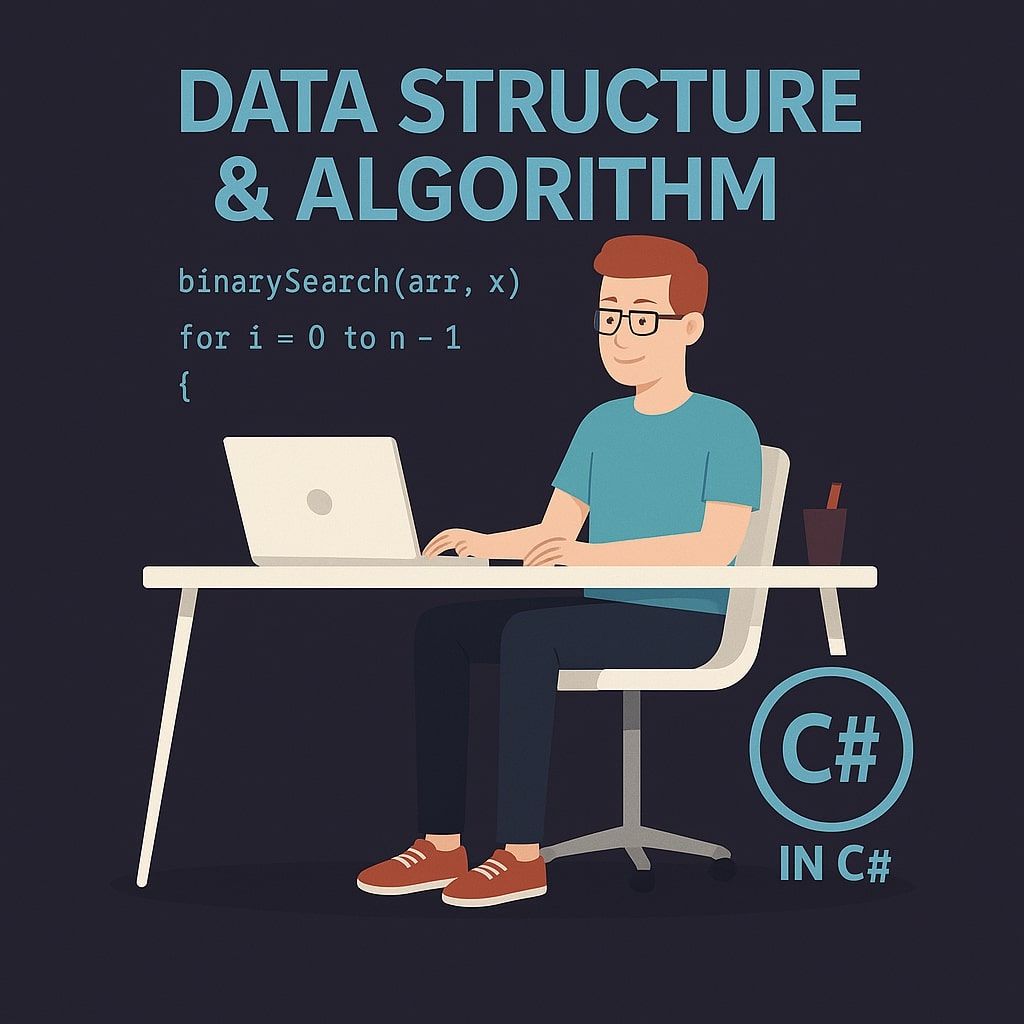Getting started with DAA (Algorithms in C#)
Understanding DSA – The Foundation of Efficient Programming
Data Structures and Algorithms are the two foundational stones of computer science and software development. These concepts ensure that from a simple script to a large scale system, the code is functionally working and performance optimized. These are the tools through which developers store, organize, and manipulate their data efficiently.
What Is DSA?
Data structures are arrangements and storage of data for efficient operations such as access, insertion, and deletion. These include arrays, linked lists, stacks, queues, trees, heaps, graphs, and hash tables. Each structure is used for specific types of problems. For example, trees are for hierarchical data, and queues are very good at scheduling tasks.
Algorithms are procedures or well-defined instructions to solve certain problems or to complete a task. They can be something as simple as searching or sorting, or they can be extraordinarily complex, involving operations like graph traversal and dynamic programming.
Together, DSA helps in solving computational problems in an efficient and logical way.
Why Is DSA Important?
Writing optimized code requires DSA. While an inefficient algorithm may technically solve a problem, it does so at the cost of taking up large amounts of time and resources, which is quite unacceptable when it comes to large-scale applications. Therefore, being proficient in DSA will allow a developer to formulate code that can be scaled and performs under pressure.
For example, getting a hash table instead of a list decreases lookup time from O(n) to O(1). Similarly, knowing the difference between applying binary search and linear search can drastically decrease execution time for larger data sets.
Relevance in Interviews and Job Roles
Another strong point in demand in technical interviews surrounding software engineering roles is DSA. Companies like Google, Microsoft, Amazon, and Facebook measure a candidate's abilities using DSA-based questions to find out how well he/she solves problems logically and how he/she develops his/her programs. DSA reflects the possibility of that developer able to complete complicated situations, think analytically and develop good solutions.
Even in day-to-day programming tasks, developers constantly face problems involving data manipulation and optimization. A strong grasp of DSA helps solve these problems more effectively.
The Evolution of DSA
While DSA is a classical concept in computer science theory, it has applications evolving from those base concepts. Today, it serves as a backbone for machine learning, game development, database design, operating systems, etc. While modern languages like Python, JavaScript, and Java offer many built-in data structures, it is important to know how they work behind the scenes for the sake of tuning performances.
As software systems become more complex and data-heavy, the importance of efficient data handling continues to grow, making DSA more relevant than ever.
Conclusion
Well-designed programming is based on DSA. It gives concepts that teach how to write logical, scalable, and high-performance code. From interviews to real-world applications, one subject every programmer needs to master is the data structures and algorithms field. It is more than simply problem-solving; it is about finding the best solution.
Become an expert in Data Structures and Algorithms (DAA) in C# with the information provided here! The paramount concepts like arrays, linked lists, stacks, queues, trees, graphs, and sorting and searching algorithms will be discussed. You will learn smart coding practices, time complexity analysis, and real-world strategies to solve problems for optimizing C# applications. This section will cover everything you need in case you prepare for coding interviews or want to increase your efficiency for software development. Start being smart with your coding using DSA in C#!
